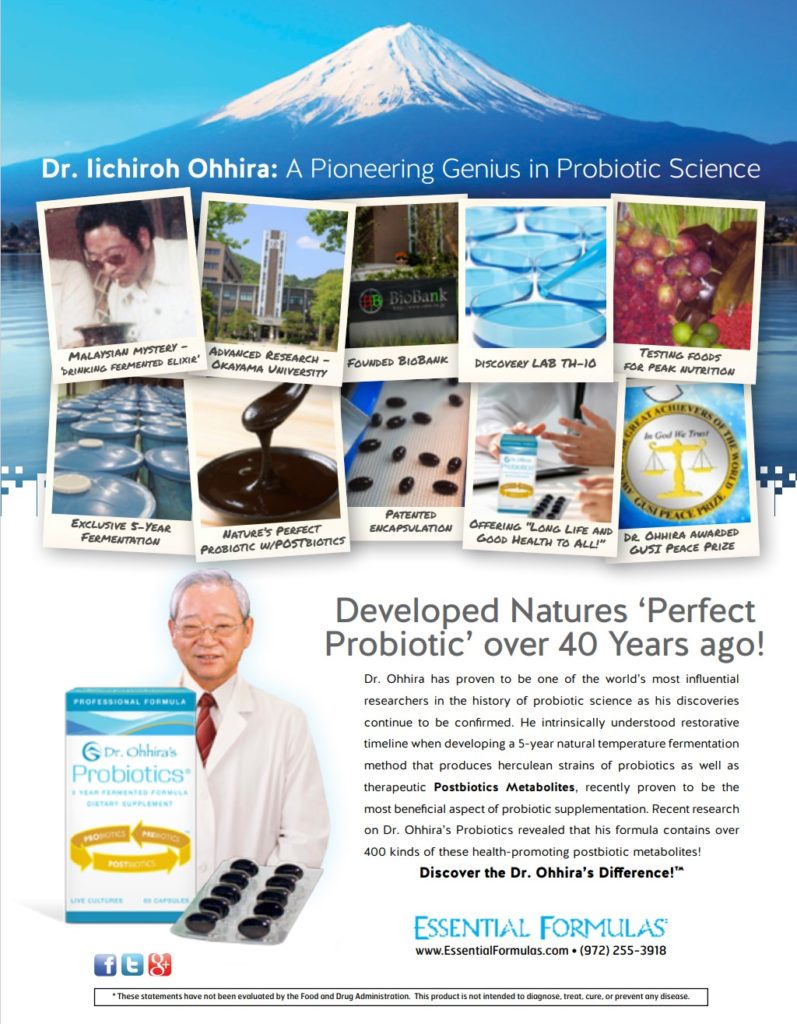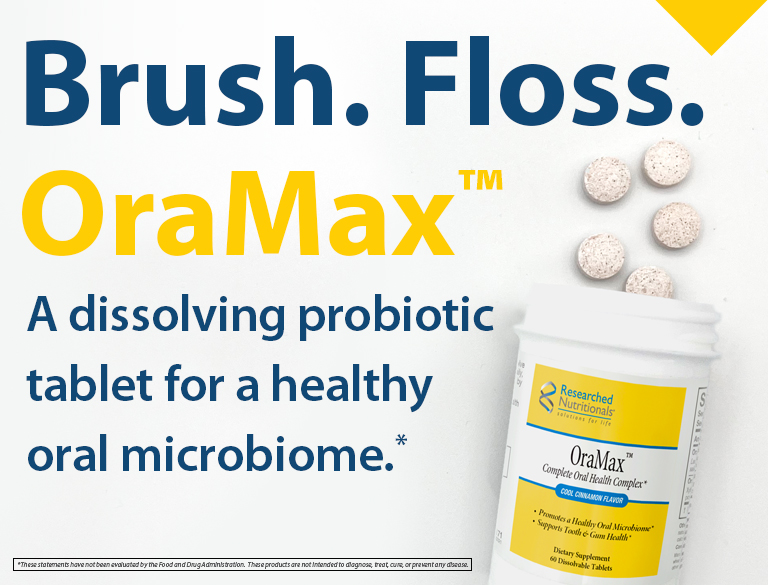By Geo Espinosa, ND, LAc, IFMCP, CNS
Overview

Prostate enlargement, or medically known as benign prostatic hyperplasia (BPH), is the fourth most common diagnosis in older men.1 More than 50% of men over age 50 years are affected, and 90% of men will have an enlarged prostate by the time they are 80 years old. Progression to urinary retention may occur with an accompanying risk of recurrent urinary tract infections, bladder stones, and occasional kidney damage. Management options for BPH include exercise, low-fat diet, supplementary medications, minimally invasive therapies, and prostate surgery.
The most common symptoms of BPH are lower urinary tract symptoms (LUTS), such as frequent urination, urgency to urinate, nighttime urination (nocturia), weak urinary stream, incomplete bladder emptying, straining to void, and a stop-and-go stream. A patient may have multiple LUTS symptoms or may be bothered primarily by one. In a clinical setting, prostate cancer, overactive bladder, urinary tract infections, prostatitis, urethral stricture, and bladder stones can also cause LUTS and must be ruled out before a diagnosis of BPH is made.2 Lastly, BPH does not increase the risk of prostate cancer though someone with BPH may have malignancies in the prostate.
There are numerous lifestyle factors associated with an enlarged prostate, including abdominal obesity and metabolic syndrome along with family history of BPH.3
Hormones and Benign Prostatic Hyperplasia
Boys castrated before puberty don’t develop BPH implying that androgens are involved in the development of prostate enlargement. Also, in men with BPH, medical or surgical castration has been shown to lead to a reduction in prostate volume.4 For testosterone to have any effect on the prostate, it must be converted to dihydrotestosterone (DHT) by the enzyme 5-alpha reductase. DHT has twice as great an effect on the prostate as testosterone.5 Although testosterone levels decline with age, concentration of DHT remain constant in both younger and older men, even with low serum level.5
However, much of the latest research has questioned the medical paradigm of testosterone as a cause for BPH. In fact, two review papers have found no correlation with testosterone replacement therapy worsening LUTS or BPH.6 Furthermore, it has been proposed that testosterone may be protective against BPH. Several studies have shown improvement or no change in IPSS scores, TRUS prostate volume, LUTS, and maximum flow rate in men on testosterone replacement. It is suspected the mechanism is multifactorial. Low testosterone levels are a risk factor for metabolic syndrome, which can lead to autonomic hypertonicity, chronic pelvic inflammation, and lower nitric oxide (NO) levels. Low NO levels worsen bladder detrusor activity and cause urethral contractions thus worsening BPH. Interestingly testosterone improves NO levels thus displaying the protective impact of testosterone on LUTS.7
Pharmaceutical Approach to Treating BPH
Most of the research on BPH and its pharmaceutical treatment has focused on modulating DHT by inhibiting the enzyme 5-alpha reductase. Other intriguing and accumulating research has illustrated the effects of estrogen or, more importantly, the estrogen:testosterone ratio in aging men and its effects on BPH.

In animal models, estrogen has shown molecular changes in the prostate of the aging dog.8 The evidence is less clear in humans. Estrogens in the male are predominantly the products of peripheral aromatization of testicular and adrenal androgens. Although the testicular and adrenal production of androgens declines with aging, levels of total plasma estradiol do not decline. In fact, estradiol remains relatively constant or even increases with age in men. This increase has been attributed to increased aromatase activity in the aging male, who often also has an increased accumulation of body fat. Fat cells contain aromatase, an enzyme that converts certain androgens to estrogen. The resulting disproportion in the estrogen:testosterone ratio may increase up to 40% in some men.9
Metabolic Syndrome as a Risk Factor
Metabolic syndrome (MetS) is a cluster of conditions, including abdominal obesity, impaired glycemia, hypertension, hypertriglyceridemia, low HD, and hyperlipidemia. It is very well known that together these conditions increase the risk of type 2 diabetes and cardiovascular disease. However, what is less apparent but is certainly a health concern for men is the risk associated with MetS and BPH/LUTS.12
With lack of exercise also being a significant risk factor for LUTS14 together with MetS, an exercise regimen can address MetS as an underlying cause of BPH and LUTS in older men.
Diagnostic Considerations
International Prostate Symptom Score. A useful subjective assessment tool for BPH patients is the International Prostate Symptom Score (IPSS). The IPSS is a modification of the American Urological Association (AUA) Symptom Index adding a single question assessing the quality of life or bother score based on the patient’s perception of the problem. The IPSS is a questionnaire that assesses the degree of LUTS and the quality of life of patients with BPH.
Patients can fill out the IPSS form before their examinations, but as little as possible interference from the health care provider and personnel is recommended. A score of 7 or less is considered mildly symptomatic, 8 to 19 points as moderate, and a score of 20 to 35 points as severely symptomatic. Both the AUA index and IPSS questionnaire—although not specific for BPH, prostate volume, urinary flow rate, postvoid residual volume, or bladder outlet obstruction—have been validated and are sensitive enough to be used in evaluating symptoms and selecting treatment.15
Digital Rectal Examination.A good physical examination should include a digital rectal examination (DRE) to determine the approximate consistency and shape of the patient’s prostate and abnormalities suggestive of prostate cancer, BPH, or prostatitis. The approximate size of the prostate can be determined with a DRE; however, inadvertent misestimations can be made even by physicians who are highly experienced. Prostate size can be determined most accurately by a transrectal ultrasound scan or MRI.
Prostate-Specific Antigen. Because the symptoms of BPH and prostate cancer can be similar, measurement of prostate-specific antigen (PSA) is often used to differentiate BPH from prostate cancer. Recent studies show there are high levels of false-positive and false-negative PSA test results; therefore, the benefits and risks of such testing should be discussed with the patient. PSA testing is one of the tools used to assess for prostate cancer and its severity, along with imaging, PSA density, staging, and Gleason score. This remains a controversial test, however, owing to its lack of specificity, which can lead to the overdiagnosis and overtreatment of indolent prostate cancers.16,17
PSA and BPH. PSA is a glycoprotein secreted by the glands of the prostate; it is released in the serum with disruption of normal prostatic tissue due to prostate cancer, inflammation, BPH, or trauma.
Finasteride (5-mg dose) and dutasteride (0.5-mg dose), both of which are 5-alpha reductase inhibitors used for the treatment of BPH and male-pattern baldness (1-mg dose of finasteride), will lower PSA levels by approximately 50% regardless of the dose.18 Ejaculation and DRE have been reported to increase PSA levels, but studies have shown the effects to be variable or insignificant.19 Prostate biopsy, however, will usually cause a substantial elevation of PSA levels. Therefore, after biopsy, PSA testing should be postponed for at least 3 to 6 weeks.20
PSA density (PSAD) can be used to differentiate between prostate cancer and BPH in men with PSAs between 4 and 10 ng/mL and normal DRE results. PSAD should be higher in men with prostate cancer than in those with benign disease because cancer causes a greater elevation in PSA per prostate volume in comparison with BPH. To determine PSAD, the patient’s PSA can be divided by prostate volume (as determined by a transrectal ultrasound examination). Studies show that a PSAD greater than 0.15 may mean a higher risk of prostate cancer. A lower PSAD would likely indicate the patient has BPH. This method should not conclusively determine whether a patient has BPH or prostate cancer, but it can be one piece of the puzzle.21
Therapeutic Considerations
Left untreated, BPH eventually obstructs the bladder outlet, leading to the retention of urine and eventual kidney damage. Because this situation is potentially life-threatening, proper surgical treatment is crucial. Surgery may also be indicated in patients who have failed medical therapy or have recurrent infections, hematuria, or renal insufficiency. In the past, medical treatment involved a procedure called transurethral resection of the prostate. Because this surgery is associated with the risk of considerable morbidity (sexual dysfunction, incontinence, and bleeding) and often makes matters worse, it should be avoided unless absolutely necessary. Surgical procedures that use thermal microwave or laser to reduce hyperplastic tissue are also available.22 Generally, these newer procedures are less expensive than transurethral resection of the prostate and have fewer complications, although subsequent therapies are often required. Green light therapy or photoselective vaporization of the prostate is a newer option that has similar outcomes to TURP with a reduced risk of bleeding.23
Lifestyle/Exercise
There is an inverse association between physical activity and BPH and a positive association between abdominal obesity and BPH. In fact, sedentary men are at higher risk of LUTS/BPH, with even non-sedentary activities such as field work and casual walking proving to be protective against BPH.24

The ingestion of more calories may encourage abdominal obesity and sympathetic nervous system activity, both of which can increase the risk of BPH. Increased sympathetic activity, which is the “fight or flight” arm of the autonomic nervous system, may cause the prostate’s smooth muscle to contract, resulting in a worsening of lower urinary tract symptoms. Furthermore, hyperinsulinemia and insulin resistance caused by increased caloric ingestion, especially of high sugar content, may further complicate BPH/LUTS via a hypersympathetic response. Thus, resulting in constriction of the internal urethral sphincter.25,26 However, a higher caloric intake does not seem to increase BPH risk when accompanied by increased physical activity.27
It is then possible that physical activity may serve a threefold purpose:
- It may increase blood flow to the area, allowing the body to remove wastes efficiently.
- It can decrease sympathetic stress responses, thus relaxing prostatic tissue.
- It can reduce excess abdominal weight, which increases overall lower body pressure, thus relaxing the prostate/rectal region and improving blood flow into and out of the area.
Dietary and Nutritional Factors
Diet appears to play a critical role in the health of the prostate. Diets high in overall fat (not specific to the type of fat) are associated with an increased risk of BPH, as are diets high in red meat (whether conventional meats were used in comparison with the grass-fed kind is unknown.) Conversely, according to a recent large, randomized trial, diets high in protein and vegetables are associated with a decreased risk.28 A special emphasis should be considered for onions, garlic, and other allium plants, as higher intakes of these foods were associated with a decreased BPH risk.29
It is particularly important to avoid pesticides, increase fruit consumption,30 increase the intake of zinc and essential fatty acids, and decrease coffee consumption; a moderate intake of alcohol can possibly benefit BPH but make LUTS worse.31
Zinc. Studies conducted in the 1970s showed that zinc supplementation reduced the size of the prostate and the symptomatology of BPH in the majority of patients.32 A more recent randomized trial comprising 4770 participants indicates a possible protective role of zinc against BPH. In that investigation, BPH was assessed over seven years and defined in terms of medical or surgical treatment or repeated elevation (above 14) on the IPSS questionnaire. Diet, alcohol, and the use of supplements were assessed via a food frequency questionnaire. Higher zinc intake was associated with a significantly reduced risk for BPH.33 The mechanism probably involves zinc’s ability to inhibit 5-alpha reductase and/or by its ability to inhibit prolactin.34 Prolactin has been shown to increase the uptake of testosterone by the prostate, thereby leading to increased levels of DHT by providing additional substrate.35
Cholesterol. The association with cholesterol, BPH, and LUTS has been mixed. High levels of serum lipids have been associated with cardiovascular disease and include elevated serum LDL cholesterol, decreased serum HDL cholesterol, and increased serum triglycerides. In the case of BPH, however, as described by Parsons, no positive association has been shown for cholesterol.38 In fact, hyperinsulinemia with hyperlipidemia and low HDL are risk factors for prostatic inflammation and BPH.39
Beta Sitosterol. Beta sitosterol is one of several plant sterols (cholesterol is the main animal sterol) found in almost all plants. High levels are found in rice bran, wheat germ, corn oil, soybeans. peanuts and their products—such as peanut oil, peanut butter, and peanut flour—as well as Serenoa repens, avocados, pumpkin seed, Pygeum africanum, and cashew fruit. Studies found that beta-sitosterol reduces prostate volume, improve urinary flow measures via IPSS, urodynamic measure, mean urine flow, residual urine volume and nocturia.40
Vitamin D. Numerous studies have shown that vitamin D3 may have protective effects against prostate cancer.41
The mechanism of vitamin D’s favorable effect on BPH is by attaching this molecule to vitamin D receptors on the prostate and bladder and inhibiting prostate growth, lowering excessive contractility, and reducing inflammation.42
Botanical Medicines
Botanical medicine in the treatment of BPH has been a popular recommendation in Europe for decades. The chance of clinical success with any of the botanical treatments of BPH appears to be determined by the degree of obstruction, as indicated by the volume of residual urine. For levels less than 50 mL, the results are usually excellent. For levels between 50 and 100 mL, the results are usually quite good. With residual urine levels between 100 and 150 mL, it will be tougher to produce a significant improvement within the customary four- to six-week period. If the volume of residual urine is greater than 150 mL, saw palmetto extract and other botanical medicines alone are unlikely to produce any significant improvement.

Cernilton. Cernilton, an extract of rye-grass flower pollen, has been used to treat prostatitis and BPH in Europe for more than 35 years. It has been shown to be quite effective in several double-blind clinical studies in the treatment of BPH, where the overall success rate is about 70%. Patients who respond typically experience less nocturia and diurnal frequency (a reduction of about 70%) as well as significant reductions in residual urine volume. The extract has been shown to exert some anti-inflammatory action and to produce a contractile effect on the bladder while simultaneously relaxing the urethra. In addition, cernilton contains a substance that inhibits the growth of prostate cells. In one study, the clinical efficacy of cernilton in the treatment of symptomatic BPH was examined over a one-year period. Seventy-nine men averaging 68 years of age (range 62 to 89) with a mean baseline prostatic volume of 33.2 cm2 were given 63 mg cernilton pollen extract twice daily for 12 weeks. As a result, their average urinary maximum flow rate increased from 5.1 to 6 mL/s. Average flow rate increased from 9.3 to 11 mL/s. Residual urine volume decreased from 54.2 mL to less than 30 mL.44 Clinical efficacy, based on symptoms, was as follows:
- Urgency or discomfort: improved by 76.9%
- Dysuria: improved by 71.4%
- Nocturia: improved by 56.8%
- Incomplete emptying: improved by 66.2%
- Prolonged voiding: improved by 64.1%
- Delayed voiding: improved by 62.2%
- Intermittency: improved by 60.6%
- Postvoid dribbling: improved by 42.7%
Reishi mushroom (Ganoderma lucidum). Of the many medicinal mushrooms utilized in naturopathic medicine, Ganoderma lucidium has shown the most promise in improving BPH symptoms and LUTS in older men. This medical mushroom has been shown to inhibit 5-alpha-reductase in the ventral prostate of rats. Two follow-up randomized placebo-controlled trials tested the use of G. lucidum in adult men with LUTS. The primary outcomes assessed for changes in the IPSS score. The two studies exhibited a significant reduction in IPSS scores using 6 mg daily of G. lucidum. There was no added benefit at doses of 60 mg, suggesting a higher dose is not necessary to reduce LUTS.
Interestingly, no changes were noted in quality of life scores, peak urinary flow, mean urinary flow, residual urine, prostate volume, serum prostate-specific antigen or testosterone levels. This would suggest that the benefits observed from Ganoderma are not dependent on the ability to inhibit 5-alpha-reductase as was seen in earlier animal trials. This is significant as reductions in PSA and inhibition of androgen and DHT receptors in the prostate may impact screening for BPH and prostate cancer. Therefore, supplementing with Ganoderma may improve symptoms and still allow for proper PSA screening and monitoring.45
Cranberry (Vaccinium macrocarpon). The use of Vaccinium macrocarpon or better known as cranberry fruit has been popularized for its use in urinary tract infections. However, the use of this fruit has also shown promise in the management of LUTS and BPH in men. Two studies have assessed the efficacy of Vaccinium extract in improving IPSS scores, quality of life scores, along with clinical parameters such as PSA, post-void residual urine volume (PVR), average urinary flow rate (Q ave) and maximum urinary flow rate (Q max). Findings from both studies suggest Vaccinium improves IPSS scores along with significantly improving urinary parameters such as Q max, Q ave, and PVR. One of the studies assessed the benefits of PSA reduction, showing this fruit was able to reduce PSA in men with histologically confirmed non-bacterial chronic prostatitis. Possible mechanisms, although unclear, suggest V. macrocarpon improves detrusor contraction and activation, the micturition reflex, reduces inflammation, and possibly improves the dynamic and static prostatic components of voiding.46
Chinese Skullcap Root. Chinese skullcap (Scutellaria baicalensis), a member of the 50 fundamental herbs of traditional Chinese medicine, is known for as an anti-inflammatory agent in East Asia countries.47
A growing body of evidence recognizes the importance of chronic inflammation from COX-2 activity increasing proliferative inflammatory lesions in human prostate tissues, which predisposes to BPH.48
Therapeutic Approach
Severe BPH resulting in significant acute urinary retention may require catheterization for relief; a sufficiently advanced case may not respond rapidly enough to therapy and may require the short-term use of an alpha1 antagonist by itself or combined with a 5-alpha reductase medication or surgical intervention.
Lifestyle. Patients should exercise, between four to six times a week, and properly stretch the prostate/urogenital area to increase blood flow.
Diet. Initially, the diet should be higher in vegetable protein, low in carbohydrate, low in animal fats, and high in unsaturated oils. After the patient responds, a less strict whole-foods, balanced approach can be used. The patient should limit alcohol and coffee intake, avoid drug-, pesticide- and hormone-contaminated foods, and limit cholesterol-rich foods.
Supplements. Zinc: 30 to 45 mg/day (picolinate preferred, maximum of 6 months; reduce dosage to 15 to 30 mg/day after 6 months and consider monitoring copper status in long-term therapy); Vitamin D3: 2000 to 5000 IU/day.
Botanicals
- Liposterolic extract of saw palmetto (S. repens) (standardized at 85% to 95% fatty acids and sterols): 160 mg two times a day
- Flower pollen extract (e.g., cernilton): 63 mg two to three times a day
- Cranberry extract: 500 mg once a day
- Reishi mushroom: 6 mg a day
- Chinese Skullcap (Scutalleria baicalensis): 100mg once or twice a day
- Beta-sitosterol: 60 to 130 mg/day
References
- Bushman W. Etiology, epidemiology, and natural history of benign prostatic hyperplasia. Urol Clin North Am. 2009;36(4):403-415, v.
- Sanda MG, et al. Genetic susceptibility of benign prostatic hyperplasia. J Urol. 1994;152(1):115-119.
- Wang J-Y, Fu Y-Y, Kang D-Y. The Association Between Metabolic Syndrome and Characteristics of Benign Prostatic Hyperplasia: A Systematic Review and Meta-Analysis. Medicine (Baltimore). 2016;95(19):e3243.
- Bartsch G, Rittmaster R, Klocker H. Dihydrotestosterone and the concept of 5alpha-reductase inhibition in human benign prostatic hyperplasia. World J Urol. 2002;19(6):413-425.
- Imperato-McGinley J, Zhu YS. Androgens and male physiology the syndrome of 5α-reductase-2 deficiency. In: Molecular and Cellular Endocrinology. Vol 198. ; 2002:51-59.
- DeLay KJ, Kohler TS. Testosterone and the Prostate. Urol Clin North Am. 2016;43(3):405-412.
- Baas W, Köhler TS. Testosterone Replacement Therapy and BPH/LUTS. What is the Evidence? Curr Urol Rep. 2016;17(6):46.
- Barrack ER, Berry SJ. DNA synthesis in the canine prostate: effects of androgen and estrogen treatment. Prostate. 1987;10(1):45-56.
- Prezioso D, et al. Estrogens and aspects of prostate disease. Int J Urol. 2007;14(1):1-16.
- Asiedu B, et al. The role of sex steroid hormones in benign prostatic hyperplasia. Aging Male. 2017;20(1):17-22.
- Wynder JL, et al. Estrogens and Male Lower Urinary Tract Dysfunction. Curr Urol Rep. 2015;16(9):61.
- Pan JG, et al. Association of Metabolic Syndrome and Benign Prostatic Hyperplasia in Chinese Patients of Different Age Decades. Urol Int. 2014;93(1):10-16.
- Pashootan P, et al. Association between metabolic syndrome and severity of lower urinary tract symptoms (LUTS): an observational study in a 4666 European men cohort. BJU Int. 2015;116(1):124-130.
- Marshall LM, et al. Lifestyle and health factors associated with progressing and remitting trajectories of untreated lower urinary tract symptoms among elderly men. Prostate Cancer Prostatic Dis. 2014;17(3):265-272.
- Barry MJ. Evaluation of symptoms and quality of life in men with benign prostatic hyperplasia. Urology. 2001;58:25-32.
- Woolf S. Screening for Prostate Cancer with Prostate-Specific Antigen: An Examination of the Evidence. N Engl J Med. 1995;333(21):1401-1405.
- Schröder FH, et al. Screening and Prostate-Cancer Mortality in a Randomized European Study. N Engl J Med. 2009;360(13):1320-1328.
- Andriole GL, et al. Treatment with finasteride preserves usefulness of prostate-specific antigen in the detection of prostate cancer: results of a randomized, double-blind, placebo-controlled clinical trial. Urology. 1998;52(2):195-202.
- Zisman A, et al. Postejaculation serum prostate-specific antigen level. Eur Urol. 1997;32(1):54-57.
- Oesterling JE, et al. Effect of cystoscopy, prostate biopsy, and transurethral resection of prostate on serum prostate-specific antigen concentration. Urology. 1993;42(3):276-282.
- Allan RW, Sanderson H, Epstein JI. Correlation of minute (0.5 MM or less) focus of prostate adenocarcinoma on needle biopsy with radical prostatectomy specimen: role of prostate specific antigen density. J Urol. 2003;170(2 Pt 1):370-372.
- Dull P, Reagan RW, Bahnson RR. Managing benign prostatic hyperplasia. Am Fam Physician. 2002;66(1).
- Zang Y-C, et al. Photoselective vaporization of the prostate with GreenLight 120-W laser versus transurethral resection of the prostate for benign prostatic hyperplasia: a systematic review with meta-analysis of randomized controlled trials. Lasers Med Sci. 2016;31(2):235-240.
- Lee HW, et al. The Study About Physical Activity for Subjects With Prevention of Benign Prostate Hyperplasia. Int Neurourol J. 2014;18(3):155.
- Vignozzi L, et al. Fat boosts, while androgen receptor activation counteracts, BPH-associated prostate inflammation. Prostate. 2013;73(8):789-800.
- Wolin KY, et al. Physical Activity and Benign Prostatic Hyperplasia-Related Outcomes and Nocturia. Med Sci Sport Exerc. 2015;47(3):581-592.
- Kristal AR, et al. Dietary patterns, supplement use, and the risk of symptomatic benign prostatic hyperplasia: results from the prostate cancer prevention trial. Am J Epidemiol. 2008;167(8):925-934.
- Suzuki S, et al. Intakes of energy and macronutrients and the risk of benign prostatic hyperplasia. Am J Clin Nutr. 2002;75:689-697.
- Galeone C, et al. Onion and garlic intake and the odds of benign prostatic hyperplasia. Urology. 2007;70(4):672-676.
- Lagiou P, et al. Diet and benign prostatic hyperplasia: A study in Greece. Urology. 1999;54:284-290.
- Gass R. Benign prostatic hyperplasia: the opposite effects of alcohol and coffee intake. BJU Int. 2002;90(7):649-654.
- Fahim M, Fahim Z, Der R, Harman J. Zinc treatment for reduction of hyperplasia of prostate. Fed Proc. 1976;35:361.
- Om AS, Chung KW. Dietary zinc deficiency alters 5 alpha-reduction and aromatization of testosterone and androgen and estrogen receptors in rat liver. J Nutr. 1996;126:842-848.
- Login IS, Thorner MO, MacLeod RM. Zinc may have a physiological role in regulating pituitary prolactin secretion. Neuroendocrinology. 1983;37:317-320.
- Farnsworth WE, et al. Interaction of prolactin and testosterone in the human prostate. Urol Res. 1981;9(2):79-88.
- Chyou P-H, et al. A prospective study of alcohol, diet, and other lifestyle factors in relation to obstructive uropathy. Prostate. 1993;22(3):253-264.
- Gass R. Benign prostatic hyperplasia: The opposite effects of alcohol and coffee intake. BJU Int. 2002;90(7):649-654.
- Parsons J. Lifestyle factors, benign prostatic hyperplasia, and lower urinary tract symptoms. Curr Opin Urol. 2011;21(1):1-4.
- Tilvis RS, Miettinen TA. Serum plant sterols and their relation to cholesterol absorption. Am J Clin Nutr. 1986;43(1):92-97.
- Klippel KF, Hiltl DM, Schipp B. A multicentric, placebo-controlled, double-blind clinical trial of beta-sitosterol (phytosterol) for the treatment of benign prostatic hyperplasia. German BPH-Phyto Study group. Br J Urol. 1997;80(3):427-432.
- Li H, et al. A prospective study of plasma vitamin D metabolites, vitamin D receptor polymorphisms, and prostate cancer. Franco EL, ed. PLoS Med. 2007;4(3):e103.
- Adorini L, Penna G, Fibbi B, Maggi M. Vitamin D receptor agonists target static, dynamic, and inflammatory components of benign prostatic hyperplasia. Ann N Y Acad Sci. 2010;1193:146-152.
- Lopatkin N, et al. Efficacy and safety of a combination of Sabal and Urtica extract in lower urinary tract symptoms—long-term follow-up of a placebo-controlled, double-blind, multicenter trial. Int Urol Nephrol. 2007;39(4):1137-1146.
- Dutkiewicz S. Usefulness of Cernilton in the treatment of benign prostatic hyperplasia. Int Urol Nephrol. 1996;28(1):49-53.
- Noguchi M, Kakuma T, Tomiyasu K. Effect of an extract of Ganoderma lucidum in men with lower urinary tract symptoms: a double-blind, placebo- controlled randomized and dose-ranging study. Asian J Androl. 2008;10:651-658.
- Vidlar A, et al. The effectiveness of dried cranberries ( Vaccinium macrocarpon) in men with lower urinary tract symptoms. Br J Nutr. 2010;104:1181-1189.
- Q. Zhao, X.Y. Chen, C. Martin, Scutellaria baicalensis, the golden herb from the garden of Chinese medicinal plants Sci. Bull., 61 (18) (2016), pp. 1391-1398
- W. Wang, A. Bergh, J.E. Damber. Chronic inflammation in benign prostate hyperplasia is associated with focal upregulation of cyclooxygenase-2, Bcl-2, and cell proliferation in the glandular epithelium Prostate, 61 (1) (2004), pp. 60-72
- Jin BR, Chung KS, Kim HJ, An HJ. Chinese Skullcap (Scutellaria baicalensis Georgi) inhibits inflammation and proliferation on benign prostatic hyperplasia in rats. J Ethnopharmacol. 2019 May 10;235:481-488.

BIOGRAPHY
Dr. Geo Espinosa is a naturopathic functional medicine doctor recognized as an authority in urology and men’s health. He is faculty and holistic clinician in urology at New York University Langone Health and faculty for the Institute for Functional Medicine. As an avid researcher and writer, Dr. Geo has authored numerous scientific papers and books, including the best-selling prostate cancer book Thrive, Don’t Only Survive! He is the chief medical officer and formulator at the male-focused nutraceutical company, XY Wellness, LLC. Dr. Geo is the co-founder and writer of the popular male health website, DrGeo.com.







